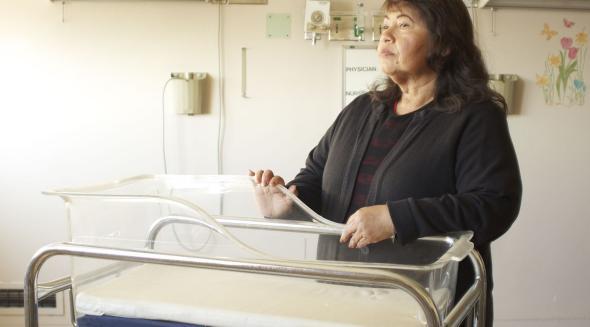In the early 1970s, as feminists advocated for abortion rights in the lead-up to Roe v. Wade, an L.A. county hospital was years into a federally funded population-control program that targeted poor Mexican American women for sterilization when they came to the hospital to give birth. Several only learned years later that they’d had tubal ligations without their consent; 10 testified against the head of the hospital’s OB-GYN program in a federal class-action lawsuit. One woman said a doctor showed her the consent form as she was on a gurney being wheeled into an operating room, midlabor, and asked her to sign it to give them permission to save her and her baby. One said she was told her husband had already read and approved the form, when he hadn’t. Many of these women couldn’t understand the English the doctors were speaking or read the form in front of them. Some heard the doctor say “tubes tied” and assumed they could be untied. Some heard the word sterilize and thought they were being cleaned after an emergency cesarean section.
Lawyers representing the women in the resulting class-action suit, Madrigal v. Quilligan, argued that the plaintiffs had a right to have children, established by Roe, as well as a right to marital privacy under Griswold v. Connecticut, in which the Supreme Court struck down a law banning contraception. But when Latina and Chicana feminists proposed measures that would help protect vulnerable women from reproductive exploitation—like instating a mandatory waiting period between when a woman consented to a tubal ligation and when the procedure took place—many primarily white feminist groups fought them on it, contending that Roe gave them the unalienable right to contraception procedures on demand.
No Más Bebés, a 2015 documentary that airs on PBS Monday night, chronicles the history of this watershed moment in the divide between movements centered on “abortion rights” and those that claim a broader agenda of “reproductive justice.” The clash in priorities has long run parallel to lines of race and class, and its legacy persists. In 2014, the New York Times ran a piece on feminist activists moving from a narrative of “choice” to one that acknowledges the spectrum of reproductive health care and economic barriers to access—a framework that feminists of color have advanced for decades. The article only quoted white women and discussed mainstream feminist organizations with largely white leadership, prompting reproductive justice advocates to protest that their contributions had been erased. Two days after the Times piece ran, a top Planned Parenthood employee wrote a clarification.
“Since the beginning, the narrative of reproductive rights has focused so much on abortion,” No Más Bebés director Renee Tajima-Peña told me. “More and more today, the conversation around reproductive freedom does focus on the full spectrum of a woman’s reproductive rights—to have a child or not have a child. But it’s taken many decades, and a lot of work, especially [by] organizations led by women of color, to change that conversation.”
Some of the film’s most arresting moments come from clips of old newsreels and doctor training videos about birth control programs meant to “space out or limit children born to the poor,” a common U.S. health policy strategy amid a countrywide panic about a population boom that scholars worried would lead to famine and social unrest. But California, which also allowed doctors to perform forced vasectomies on teen boys in group homes and sterilize thousands of people with mental illnesses and developmental disabilities, was known for its extensive, systematic sterilization model. Germany used California’s laws as the basis for its eugenics program under the Nazis. Even in recent years, the state has come under fire for unethical sterilization practices. After an audit uncovered 144 cases where incarcerated women were sterilized without state authorization—39 without proper consent from the inmates—between 2005 and 2011, the state passed a law against it.
Though Madrigal v. Quilligan was decided in favor of the doctors, it was the galvanizing moment for Chicana feminists that Roe and Griswold had been for middle-class white women. Tajima-Peña pegs it as one of the first and few cases that gave the most marginalized women a chance to speak. “Forty years ago, the women of the Madrigal 10 were among the most at risk for losing their rights. They were Latinas, predominantly low-income and Spanish-speaking,” she says. “Even within the women’s movement, they weren’t being heard. That’s always been the case with poor women, then and now.” The mainstream Chicano and Latino civil rights movements in the ’70s, which were dominated by men, didn’t offer them any more power. “We were their workers as well,” one woman recalls in No Más Bebés.
“For me, the larger issue is the idea that some women have children that are more desirable in our society, and others have children that are disposable,” says No Más Bebés producer Virginia Espino. “Forced sterilization or coercive sterilization practices are a symptom of this larger belief, not the cause.” Right-wing activists still often peg poor women of color as irresponsible overbreeders and wealthier white women as abortion-obsessed to advance an anti-immigration or anti-abortion agenda. Feminists cannot battle these related injustices in a vacuum. “I think that some white feminists are realizing that issues affecting the rights of women of color also affect them,” Espino says. “[White feminists and feminists of color] need each other if we are going to defeat the forces that are trying to strip us of our right to bodily autonomy.”
